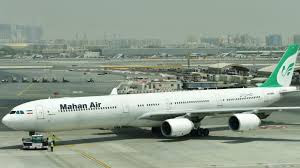WHAT IS MONEY LAUNDERING? 
MONEY LAUNDERING STAGES! SECOND ARTICLE IN THE “SERIES” !!!
FROM A
DIFFERENT POINT OF VIEW by Monte Friesner .....
Financial Crime Consultant for WANTED SA >
Sunday October 17, 2010
"Stages of Money Laundering"
Money Laundering entails three basic stages.
1. - Situating or Locating the funds in the financial system
2. - Stratification, Diversification or Processing
3. - Integration of illicit capital
Money Laundering entails three basic stages.
1. - Situating or Locating the funds in the financial system:
This is a difficult and complex stage, since it involves injecting the money received into the legal financial system. It entails the physical deposit of criminal proceeds through diverse modus operandi. It can take on a wide variety of forms, which vary depending on the opportunity, how ingenious the criminal is, who his collaborators are, and whether or not he belongs to a network of money launderers.
Drug proceeds for example, are usually in the form of small denomination bills; converting those bills into higher denomination bills or into cashier’s checks or any other negotiable monetary instrument, is usually done through high cash-flow businesses, such as restaurants, hotels, machinery factories, casinos etc…
This stage of money laundering involves the largest amounts of cash. The cash enters the financial circuit in fractioned amounts, which are deposited in cash, attempting to exchange the funds for other negotiable monetary instruments. The fractioning of the funds is done to evade the controls over large operations
For this reason, most countries have implemented laws that require financial institutions to give information about large cash operations
2. - Stratification, Diversification or Processing:
This stage of money laundering consists of making a series of somewhat complex financial transactions in order to separate the funds or goods from their source, erasing every trace and making it hard for the authorities to track the operations.
The criminal then filters the money through several operations or banks in order to hide the primary location and the final destination of the funds, creating a series of strata (levels within the system) which make it difficult to determine how the funds entered the financial system or how they were divided. This can be achieved in different ways; criminals looking to launder large amounts of money set up fictitious companies in countries where bank secrecy laws are very strict or where there is a noted lack of due diligence and prosecution for fraud. The illicit money is then transferred using these fake companies until the funds appear to be legitimate.
To this end, criminal often use varying forms of self-loans and double charging. Another stratification technique involves buying high-priced items, such as, cars, airplanes and airplane tickets under an accomplice’s name. Sometimes the money is laundered through casinos, exchanging the cash for casino chips to make them look like gambling winnings and then using the casino system to trade the chips for checks from the casino bank.
3. - Integration of illicit capital:
The money goes back into the financial system where it circulates, giving the impression of legitimacy. If the diversification is effective, the process of integration will locate the criminal proceeds back into the economy in such a way that the funds will appear to have a legal origin. Integration is done in several ways, through commercial investments, real estate deals and acquisition of luxury items among others.
The facts and opinions stated in this article are those of the author and not those of WANTED SA. WANTED SA does not warrant the accuracy of any facts and opinions stated in this article; does not endorse them, and accepts no responsibility for them.









